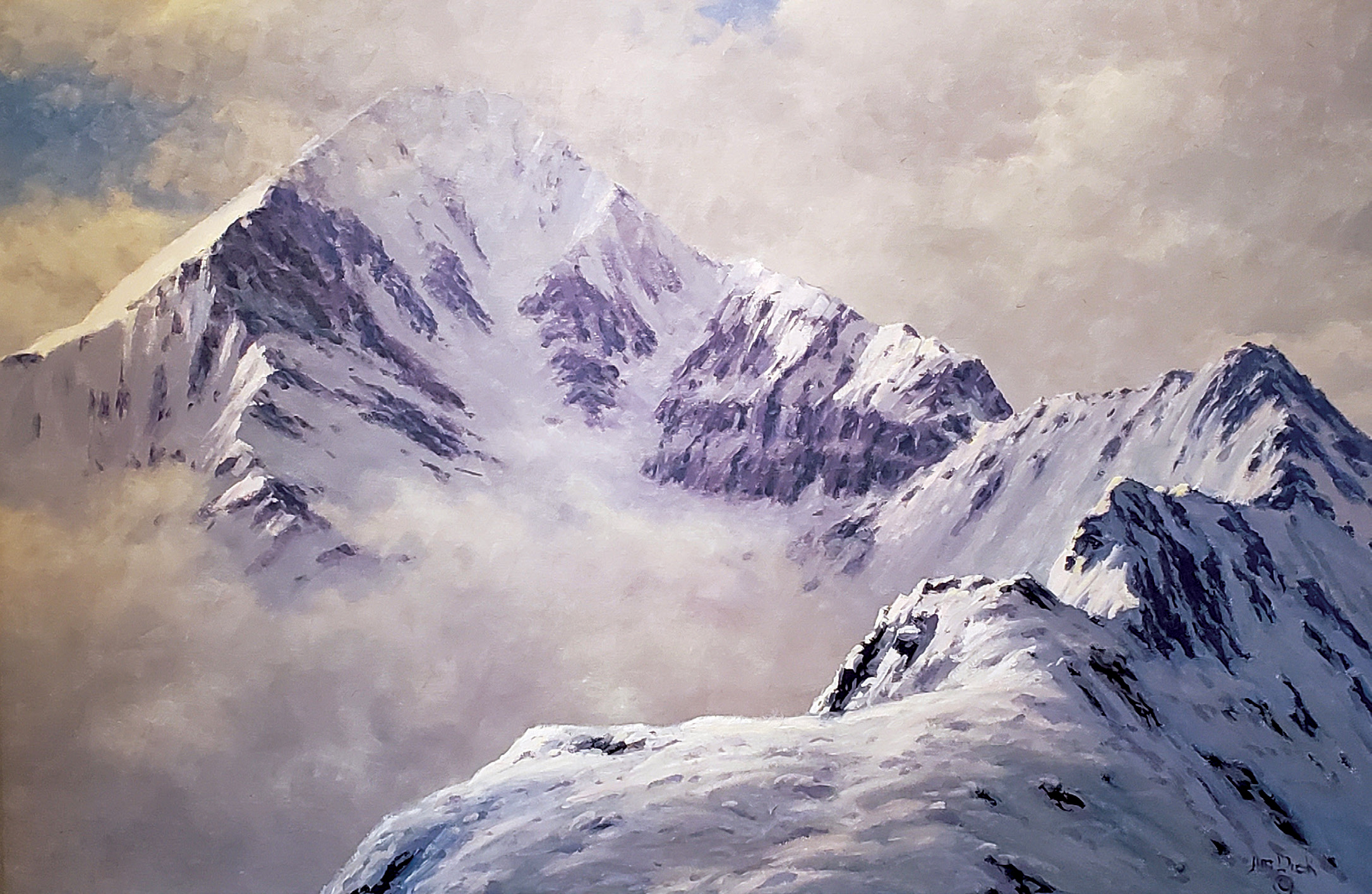
04 Feb Artist of the West: Lessons from the Landscape
Some artists, when asked about their backgrounds, will trot out a pedigree full of art schools, MFAs, and institutions that have taught them how to paint. Not so with Jim Dick. Instead, he’ll tell you that his teacher is the Montana landscape, and his lessons come from a life spent paying close attention to what that landscape offers.
As a self-taught painter, Dick has spent more than 45 years translating his passion for the outdoors onto canvas. Born and raised on a family farm on Montana’s Fort Peck Indian Reservation, he drew cartoons as a child, though at the time he didn’t consider art as a vocation. But while completing a business degree in California (and subsequently discovering that office work wasn’t his cup of tea), he began to experiment with paints. “In my mid-20s, I decided to begin painting full time and took a janitor job at night to support my passion,” Dick says. “This left my daylight hours to devote to painting with oils.”
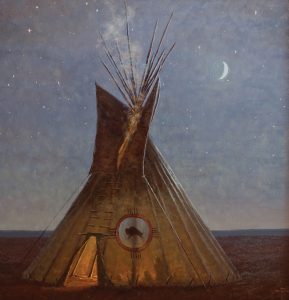
Under a Crescent Moon | oil | 36 x 36 inches
By this point, Dick had returned to Montana. “I spent all the time I could in the mountains, exploring, fishing, hiking, and painting.” He and his wife purchased a 60-acre gold mining claim in the Tobacco Root Mountains and built an off-grid homestead where they lived for many years. The location provided not only an excellent place to raise a family, but also unfettered access to the natural world. From there, it was an easy jaunt to the Gallatin and Beaverhead national forests, the Spanish Peaks Range, and other iconic Montana gems that figure prominently in Dick’s work and have contributed to his reputation as a “painter of place.”
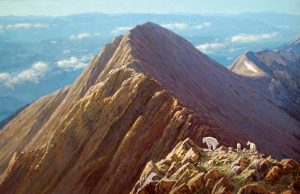
I’m Not Alone | oil | 20 x 30 inches
“Each of my paintings begins with a plein air field study in oil and on location,” the artist says. “Over the years, I’ve collected over a thousand of these studies that help me keep the feeling of the place and the season alive in my thoughts as I create my next piece.”
This catalog of images, decades’ worth of careful observations and documentation, provides Dick with ample material to be continuously painting — and continually pushing himself to become a more accomplished artist. “I’m always thinking I could do better on the next painting,” he says. “I’m taking more time with the studies and the planning of a painting before execution. I’m slowing down on the final elements leading to completion.”
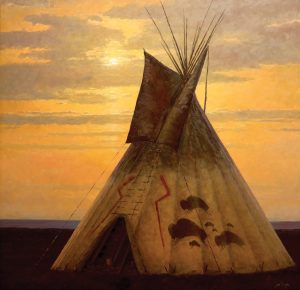
Red Sky | oil | 48 x 48 inches
According to Alissa Banks, owner of A. Banks Gallery in Bozeman, Montana, which has represented Dick for 8 years, this drive — along with his practiced skill — is what draws collectors to his work. “One of my favorite things about Jim,” she says, “is that he’s constantly evolving. Unfortunately, we don’t see that very often with contemporary artists these days — they often get a little pigeonholed. But that’s one of the great things about Jim. Every single year his work grows and becomes better. I see more light come into it.”
That noteworthy light plays a starring role in nearly all of Dick’s paintings, a testament to his skills at both observation and rendering. The artist accurately captures the first gold blush of daybreak on Lone Peak in the Madison Range, or the red haze of a smoky summer sunset on the Missouri Breaks, and it’s no small feat. Many of Dick’s paintings almost seem to glow from within, his impressionistic brush strokes highlighting the brightness of new snow, or moonlit smoke rising from a tipi hearth. It’s easy for the viewer to feel that they’re in the scene, amidst the quiet winter forest or breathing the scent of campfire.

Canyon Shadows | Oil | 36 x 36 inches
And perhaps that’s why Dick’s paintings are so appealing to such a broad range of viewers. “He paints the scenery of Montana — people know those scenes,” says Banks. “Many have amazing memories of these places and scenes that he’s painting. That really resonates with people.”
These days, Dick’s images also resonate with the mountaineers and altitude-loving among his audience. “I began trail running in my early 60s,” Dick says, “as an extension of my love for the outdoors.” Having since completed several of Montana’s most challenging competitive ridge runs, the experiences have, perhaps not surprisingly, provided ample fodder for his art. He often brings along his sketching materials during training runs, and he’s been creating new images from this bird’s-eye view. “I love the feeling of that elevated perspective, and a number of special paintings have come out of my trail running experiences,” he adds.
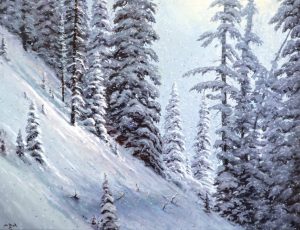
Break in the Storm | Oil | 30 x 40 inches
It’s also no surprise then that even in his seventh decade, Dick is seeking new perspectives and new adventures that bring him closer to his beloved Montana landscape, and ultimately inform his art. And in the coming decades, there is no doubt that the steady process of honing and sharpening his work will continue, driven, as he says, by the understanding that “there is always room for growth and maturing. It takes time to grow.”




No Comments